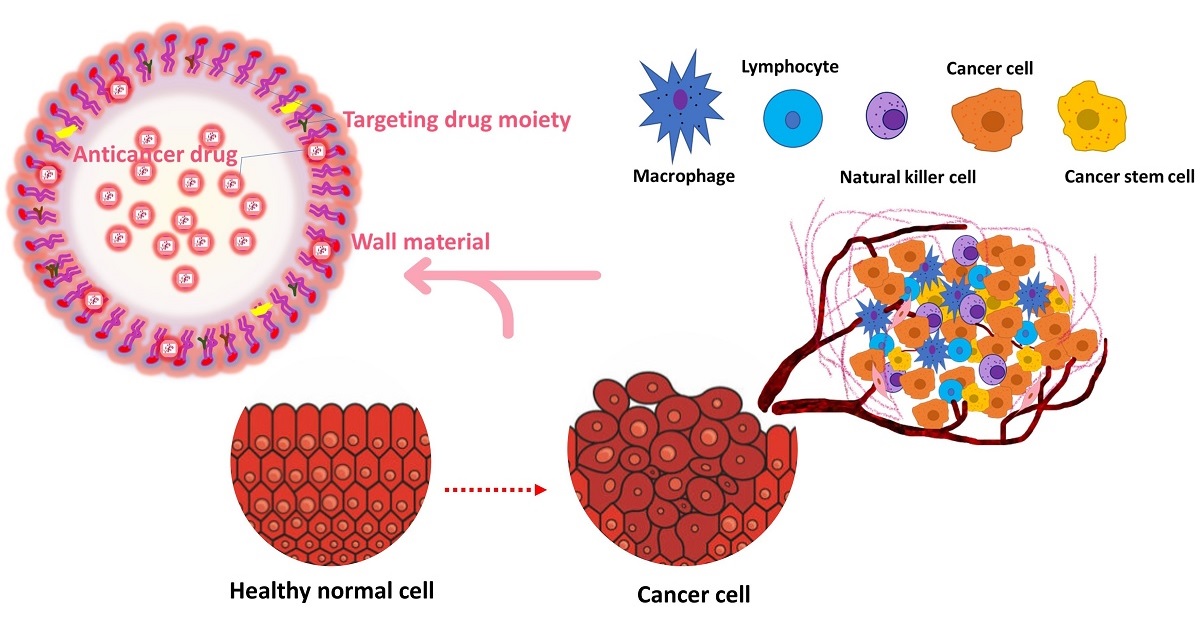- 5.2Impact Factor
- 10.5CiteScore
- 16 daysTime to First Decision
New Advances and Perspectives in Nanotechnology for the Treatment of Cancer Cells
This special issue belongs to the section “Cell Methods“.
Special Issue Information
Dear Colleagues,
In recent decades, nanotechnology has already had a great impact on cancer detection and therapy. The application of nanotechnology to the healthcare aspects of biomedicine is rapidly progressing in advanced treatment strategies, particularly in the detection and monitoring of cancer progression and treatment in the field of cancer biotherapeutics. This type of cutting-edge technology in the current pharmaceutical industry is manifested by a recently developed nanomedicine approach to the treatment various types of cancer, advances that have unlocked new abilities in developed datasets to provide biological insight into cancer.
In the Special Issue of Cells, entitled “New Advance and perspectives in Nanotechnology for the Treatment of Cancer Cells”, we would like to showcase current advances in the field of nanotechnology and related approaches to the study of cancer detection and treatment. This applies is related to advances in underlying technologies, as well as those relating to key biological and therapeutic findings. Potential topics include, but are not limited to, nanotechnology research with a cancer focus involving the development of nanotechnology methods, nanotechnology-based biological and clinical findings, small-molecule and immunotherapeutic target discovery, therapeutic mechanisms of action, cancer immunology, advancements in sample preparation techniques, single-cell analysis, comprehensive metadata analysis, AI/statistics technology, etc. The perspectives for new advances/developments in cancer biotherapeutics directing to the clinical approaches of therapeutic drug delivery by nanotechnology and based approaches will be addressed. Interdisciplinary research is highly valued and encouraged. We welcome the submission of both original research articles and reviews.
Dr. Karuppusamy Shanmugapriya
Guest Editor
Manuscript Submission Information
Manuscripts should be submitted online at www.mdpi.com by registering and logging in to this website. Once you are registered, click here to go to the submission form. Manuscripts can be submitted until the deadline. All submissions that pass pre-check are peer-reviewed. Accepted papers will be published continuously in the journal (as soon as accepted) and will be listed together on the special issue website. Research articles, review articles as well as short communications are invited. For planned papers, a title and short abstract (about 250 words) can be sent to the Editorial Office for assessment.
Submitted manuscripts should not have been published previously, nor be under consideration for publication elsewhere (except conference proceedings papers). All manuscripts are thoroughly refereed through a single-blind peer-review process. A guide for authors and other relevant information for submission of manuscripts is available on the Instructions for Authors page. Cells is an international peer-reviewed open access semimonthly journal published by MDPI.
Please visit the Instructions for Authors page before submitting a manuscript. The Article Processing Charge (APC) for publication in this open access journal is 2700 CHF (Swiss Francs). Submitted papers should be well formatted and use good English. Authors may use MDPI's English editing service prior to publication or during author revisions.
Keywords
- nanotechnology
- immunotherapeutics
- cancer biotherapeutics
- proliferation
- regulating factors
- cell culture
- biomedical application
- nutraceuticals
- cancer treatment

Benefits of Publishing in a Special Issue
- Ease of navigation: Grouping papers by topic helps scholars navigate broad scope journals more efficiently.
- Greater discoverability: Special Issues support the reach and impact of scientific research. Articles in Special Issues are more discoverable and cited more frequently.
- Expansion of research network: Special Issues facilitate connections among authors, fostering scientific collaborations.
- External promotion: Articles in Special Issues are often promoted through the journal's social media, increasing their visibility.
- e-Book format: Special Issues with more than 10 articles can be published as dedicated e-books, ensuring wide and rapid dissemination.

